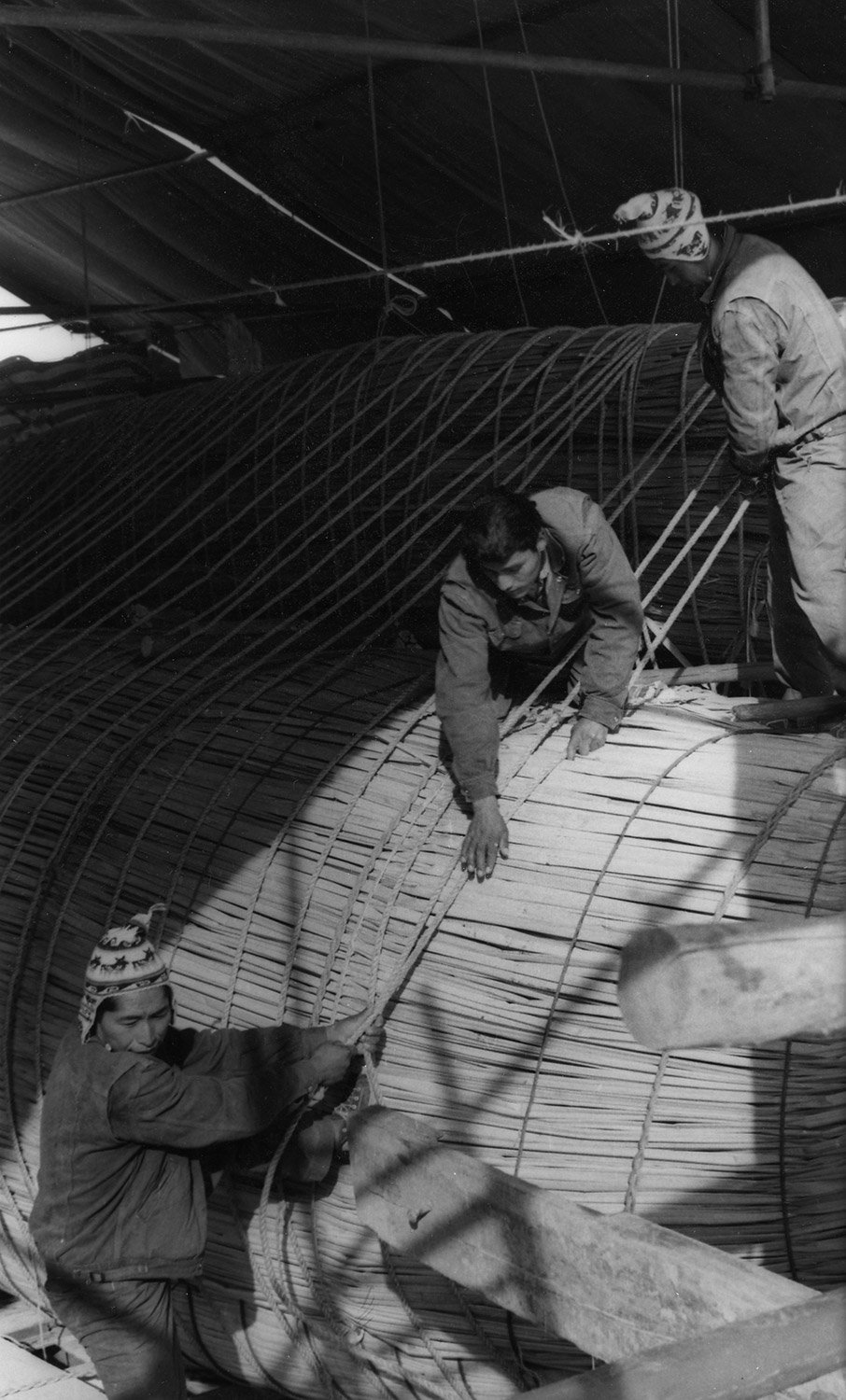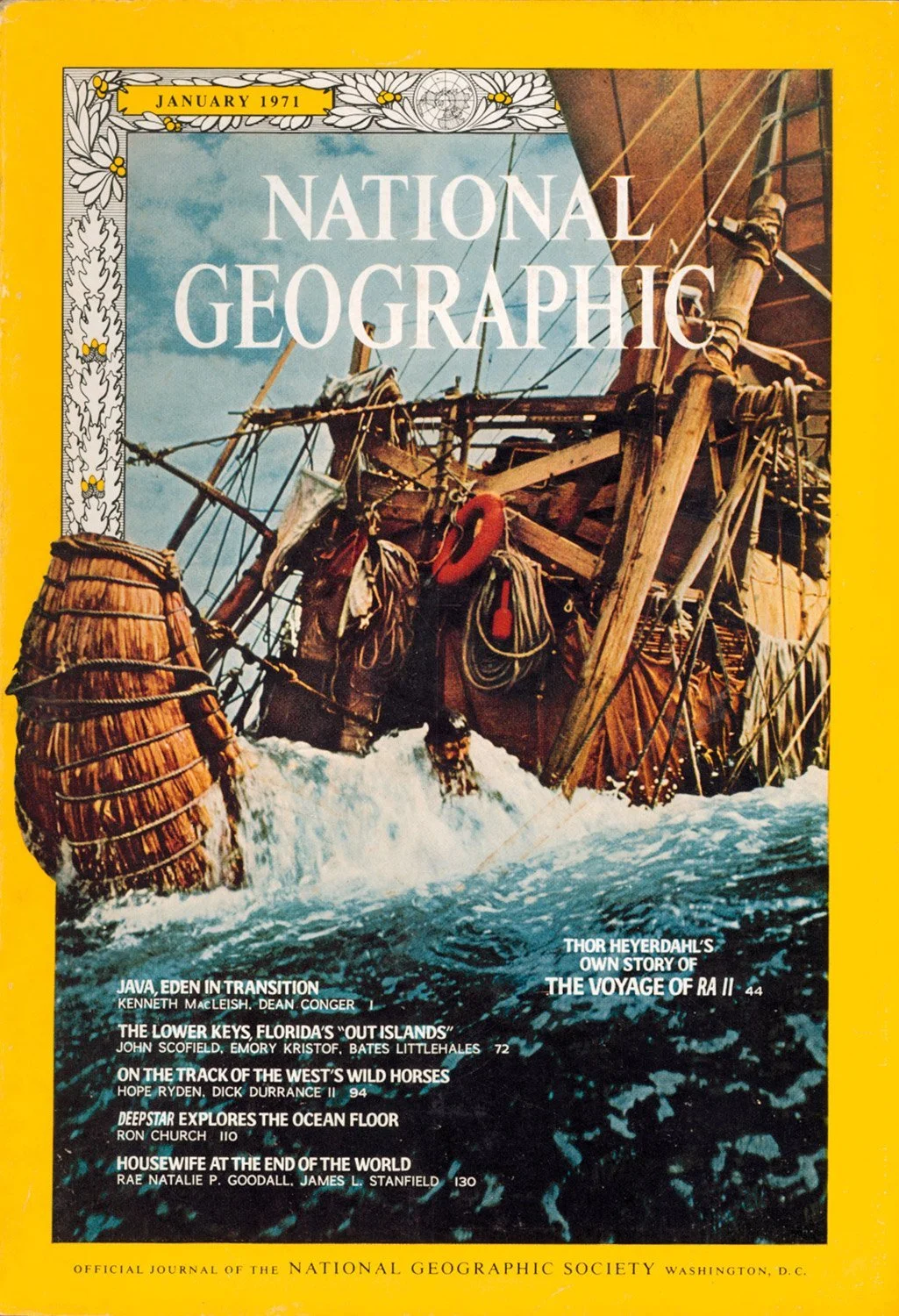Ra, 1969 - Ra II 1970
The voyage of Ra begins with Thor Heyerdahl visiting Easter Island and discovering depictions of reed boats with masts and sails. He subsequently wanted to show that prehistoric civilizations, on both sides of the Atlantic, could have been in contact with each other by means of reed boats.
In 1969, the reed boat Ra – named after the Egyptian sun god – was built, and Heyerdahl launched the vessel in the coastal town of Safi in Morocco.
In 1969, the reed boat Ra – named after the ancient Egyptian god of the sun – constructed of local papyrus reed in front of the Great Pyramid of Giza in Egypt.
It was then transported to the Moroccan coastal town of Safi, where it was launched.
Heyerdahl assembled a crew of seven men, all from different nations. He intended to demonstrate how a manifold group could cooperate effectively under stress and difficult conditions. The crew consisted of Norman Baker (USA), Carlo Mauri (Italy), Yuri A. Senkevich (Russia), Santiago Genoves (Mexico), Abdullah Djibrine (Chad) and Georges Sourial (Egypt), in addition to Heyerdahl himself.
The papyrus boat traveled 5000 kilometers in eight weeks, despite its inadequate construction and a broken helm.
But the reed fiber absorbed much water, and Heyerdahl feared that the Ra would sink with its entire crew on board. He therefore aborted the expedition, just a week shy of reaching their destination, Barbados.
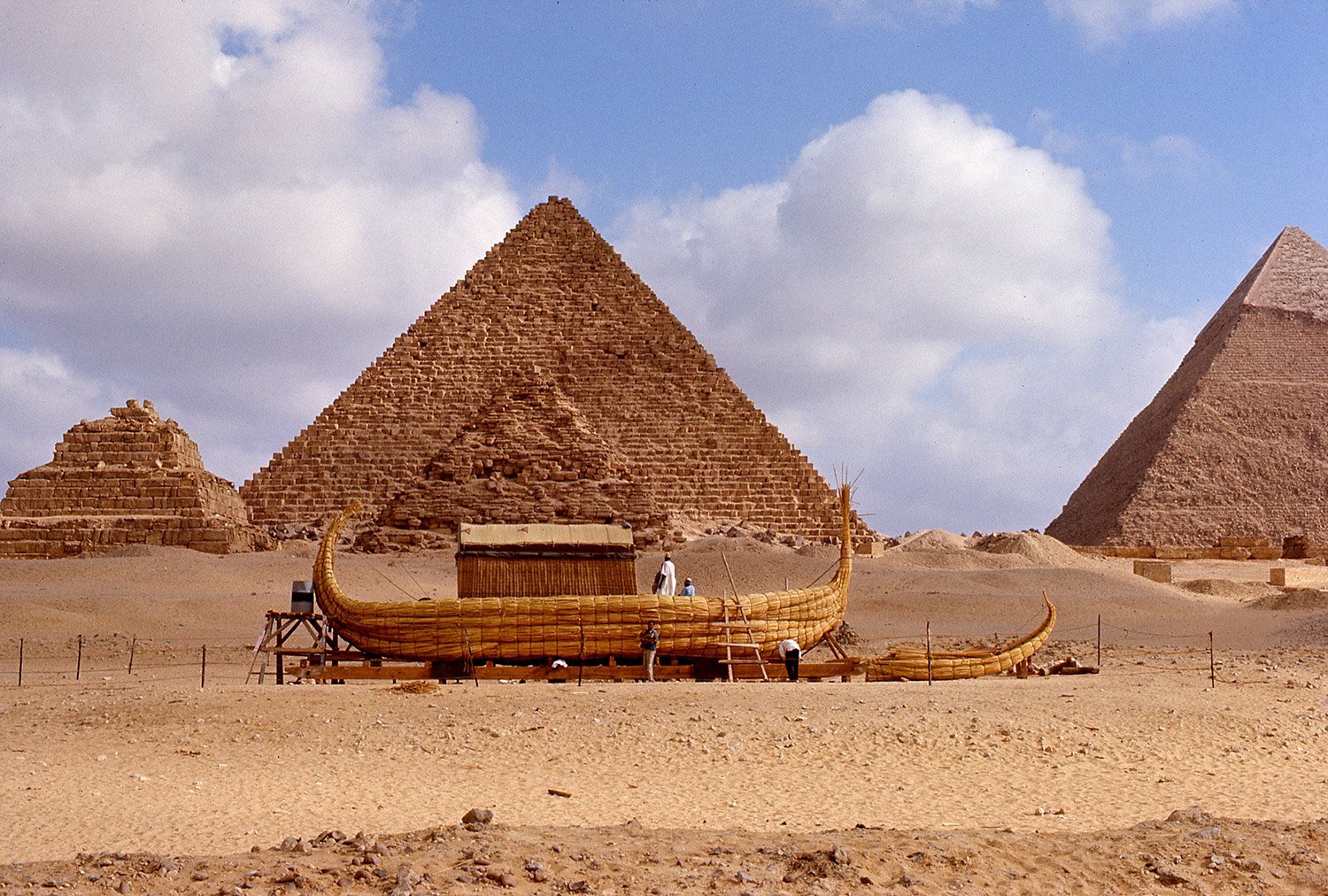
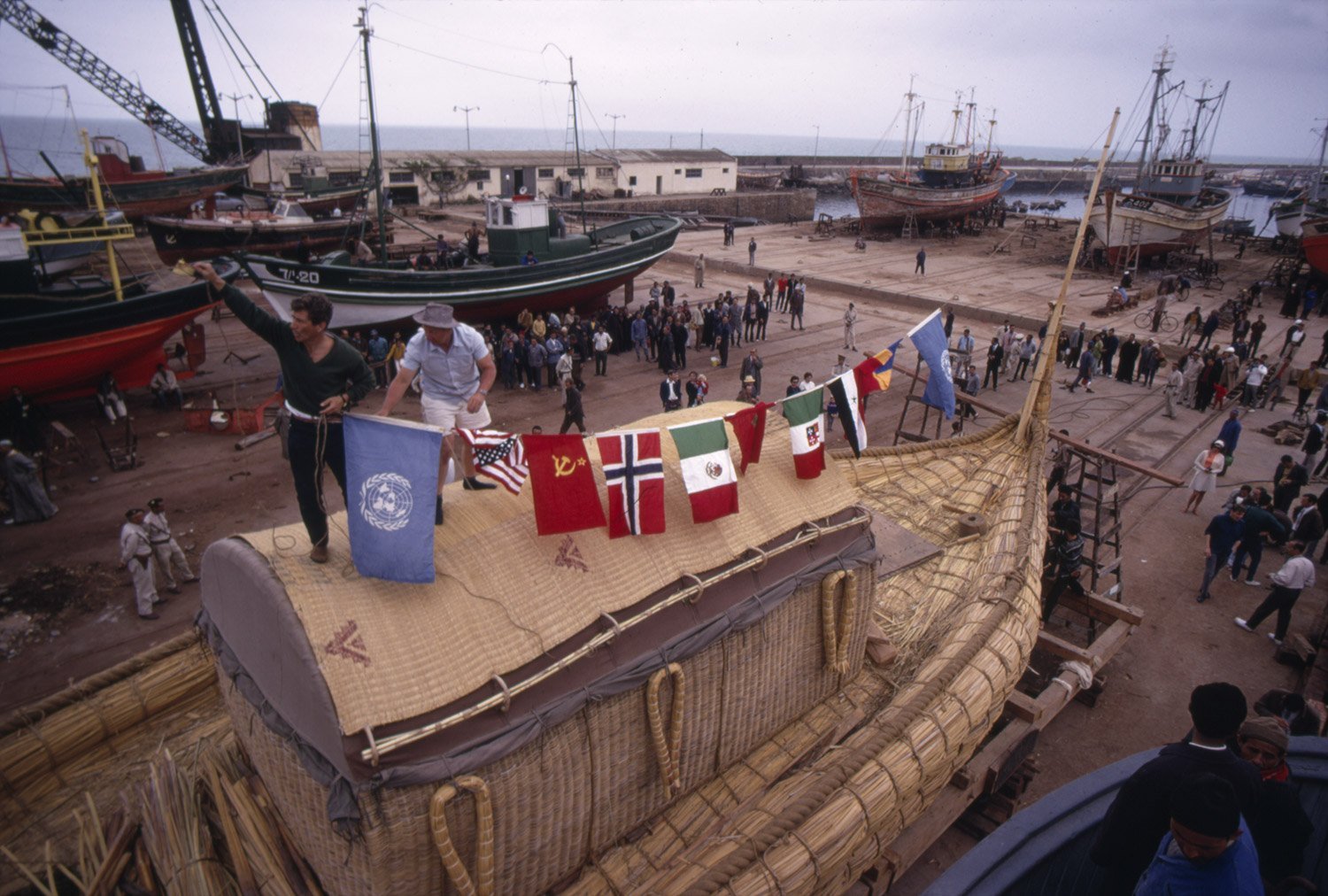

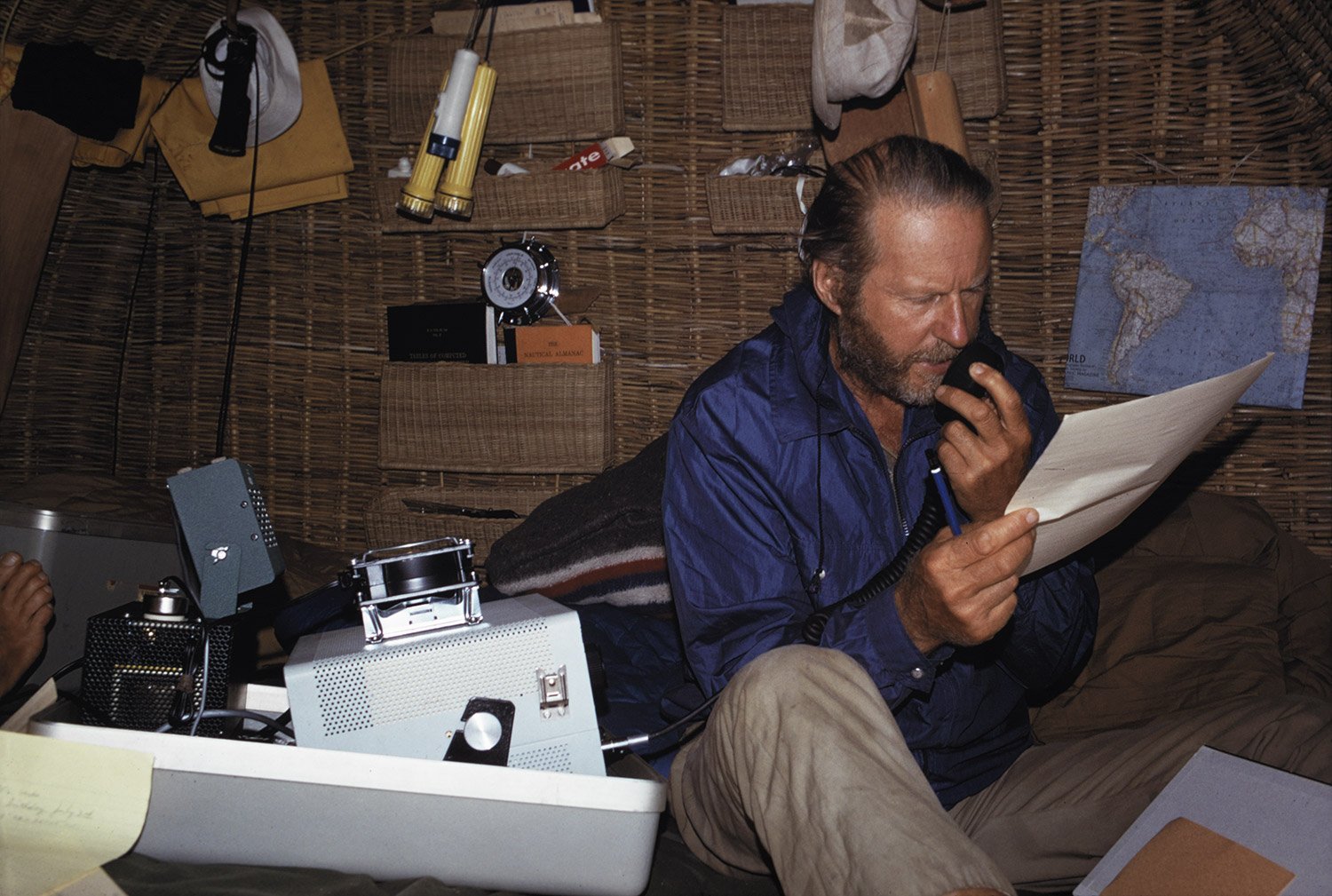
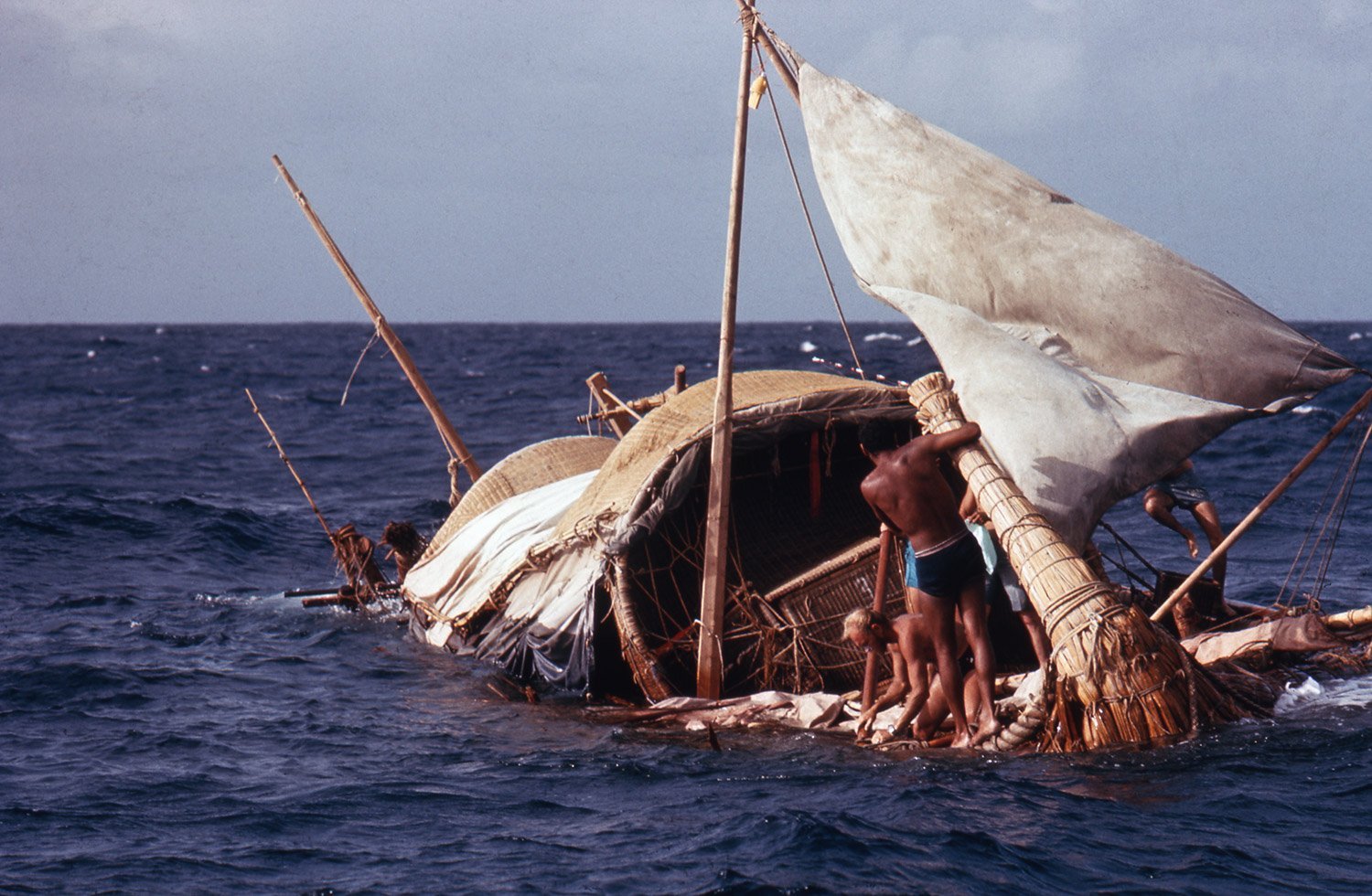
Ten months later Heyerdahl launched the Ra II from the same Moroccan port as Ra
This time he commissioned four Aymara indians from Lake Titicaca to build the reed vessel. Reed boats similar to those from ancient Mesopotamia and Egypt were still being made by craftsmen from this area in the Andes mountains.
The crew from the first Ra voyage, except Abdullah Djibrine, joined the new expedition. The crew consisted of Norman Baker (United States), Carlo Mauri (Italy), Yuri A. Senkevich (Russia), Santiago Genoves (Mexico), Kei Ohara (Japan) and Madani Ait Ouhanni (Morocco), and Georges Sourial (Egypt), in addition to Heyerdahl himself.
The new boat was shorter than the first, but far more durable in construction. The Ra II sailed the 6100 kilometers from Morocco to Barbados in 57 days. The longstanding dogma that there could not have been any contact between the Mediterranean region and South or Central America prior to Columbus’ discovery, was disproved.

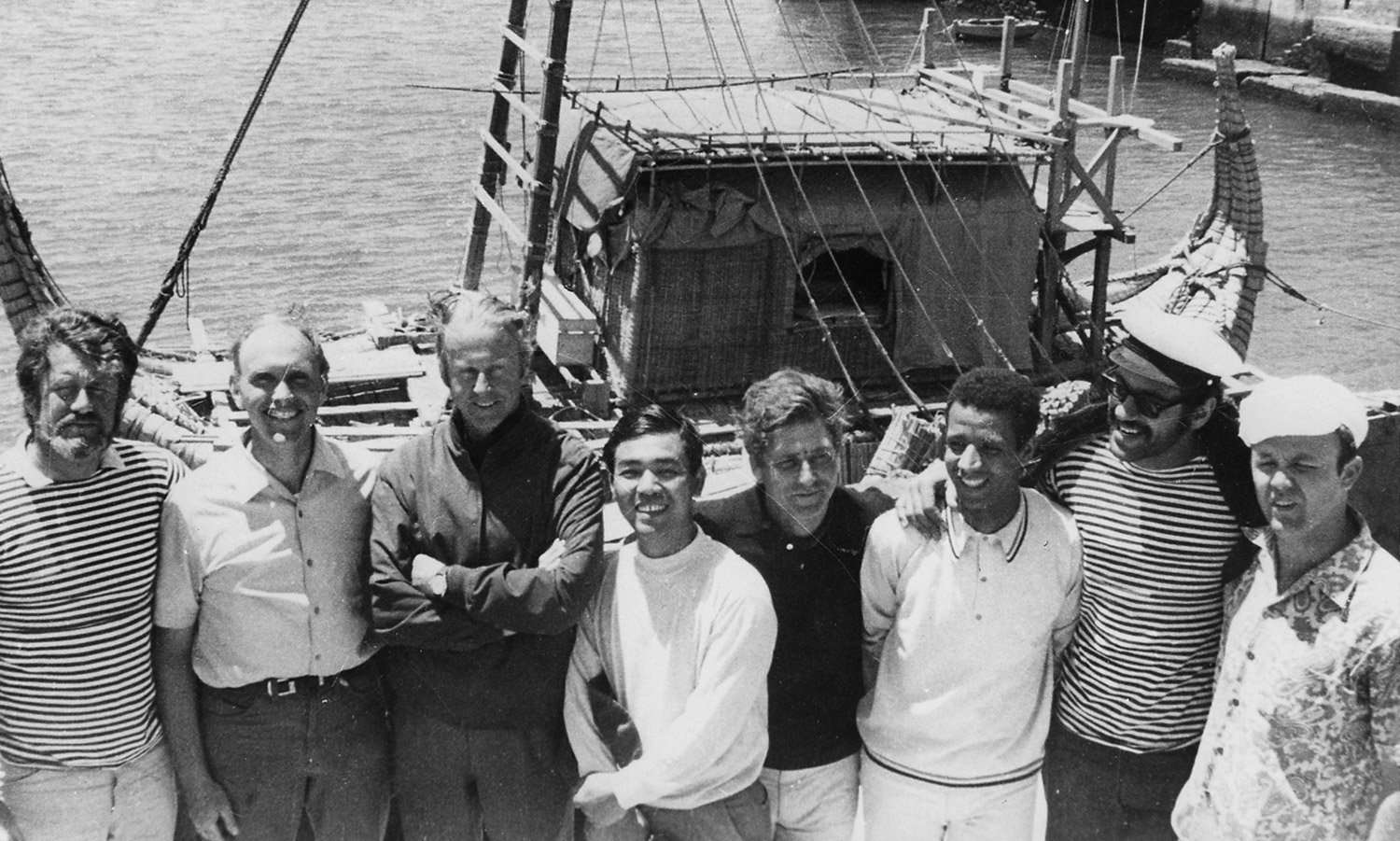
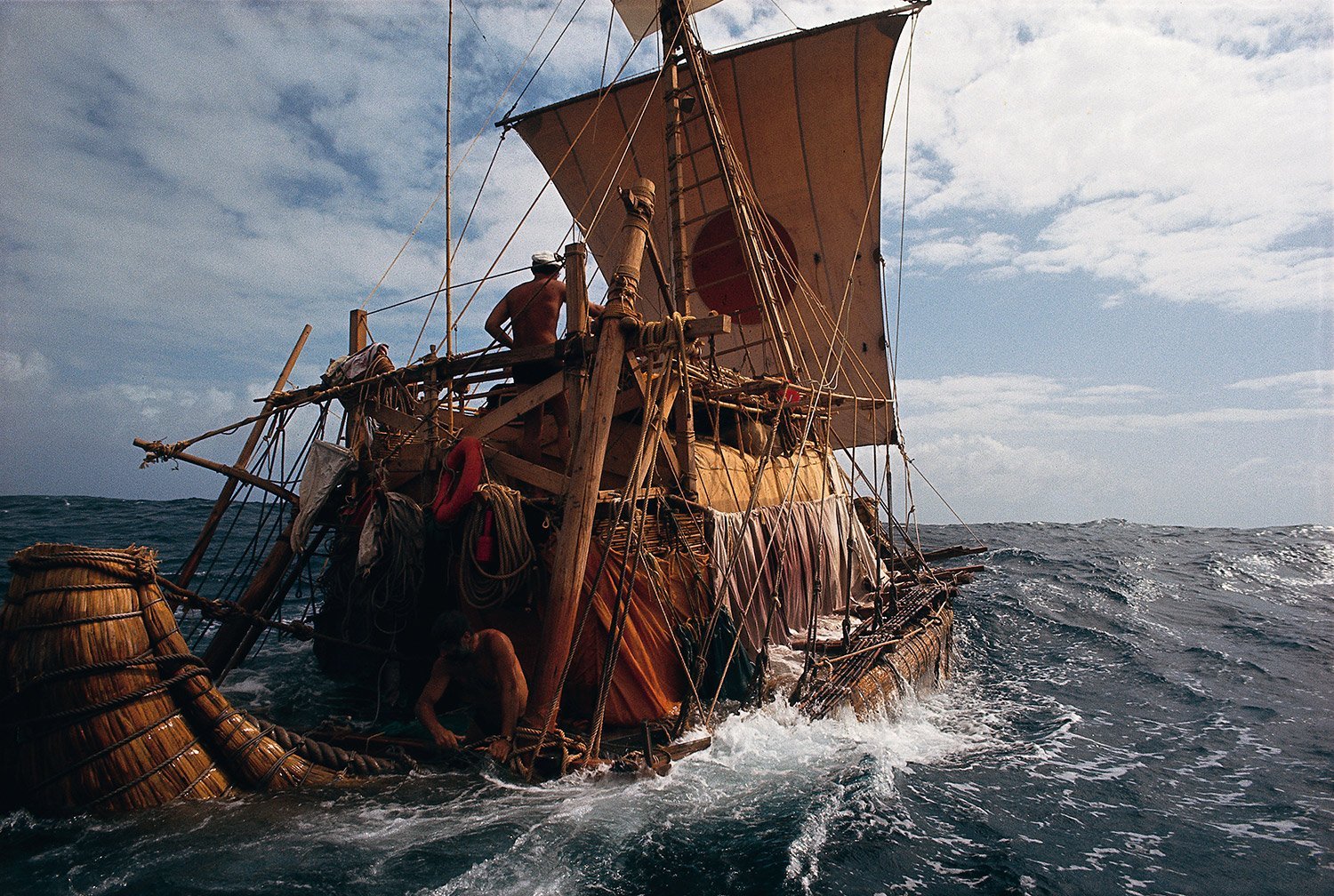
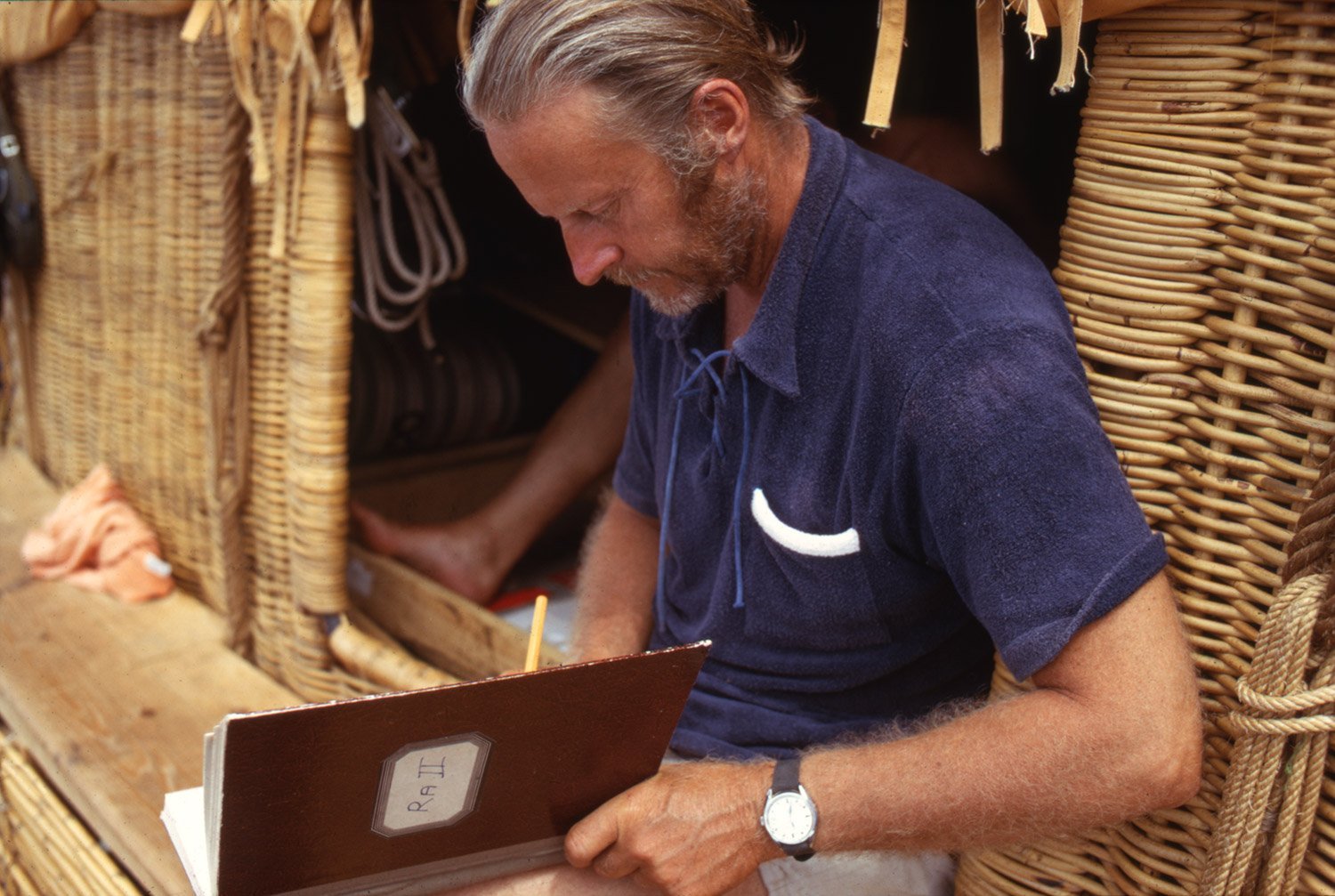
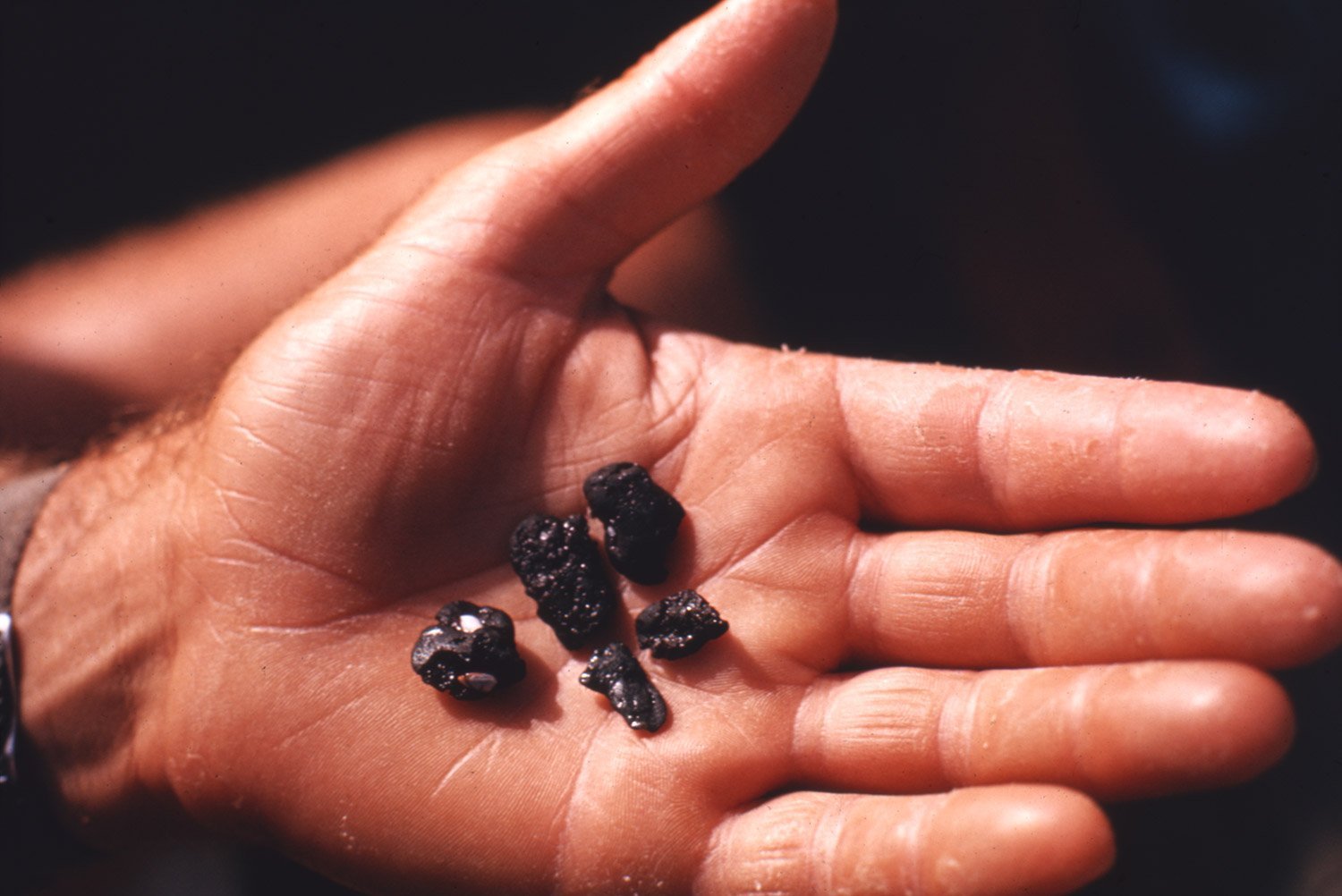
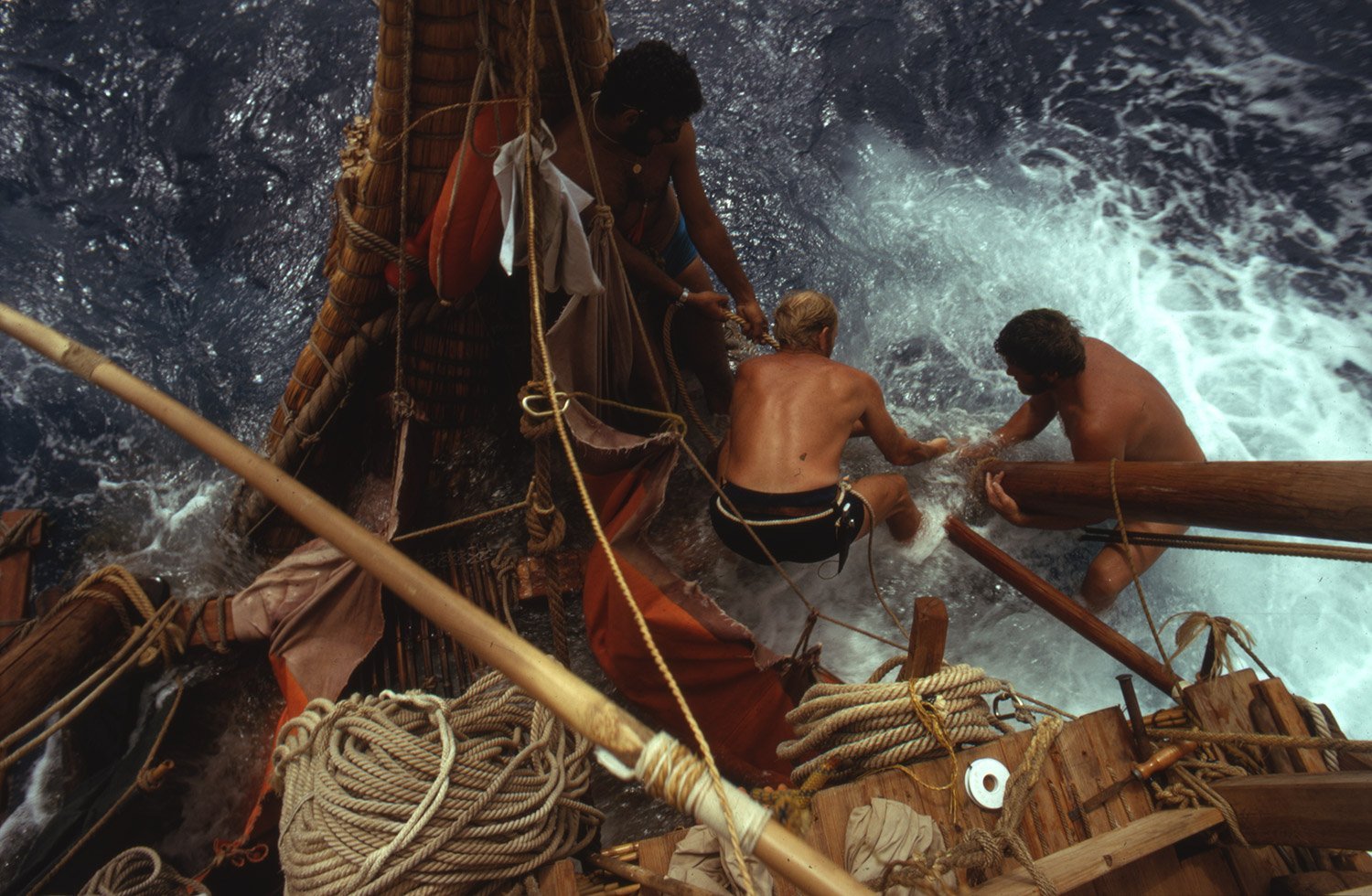
During the voyage on board the Ra, the crew noted that the Atlantic Ocean was polluted – they encountered oil clumps of varying sizes on the ocean surface.
They reported their findings to the United Nations (UN), and on the subsequent Ra II journey, Heyerdahl was asked by the UN Secretary-General U Thant to make daily observations of oceanic pollution. Oil clumps were encountered on 43 of the voyage’s 57 days.
Heyerdahl later published a book on the two Ra expeditions, and a documentary film about the Ra expeditions was nominated for an Academy Award.



